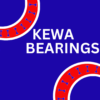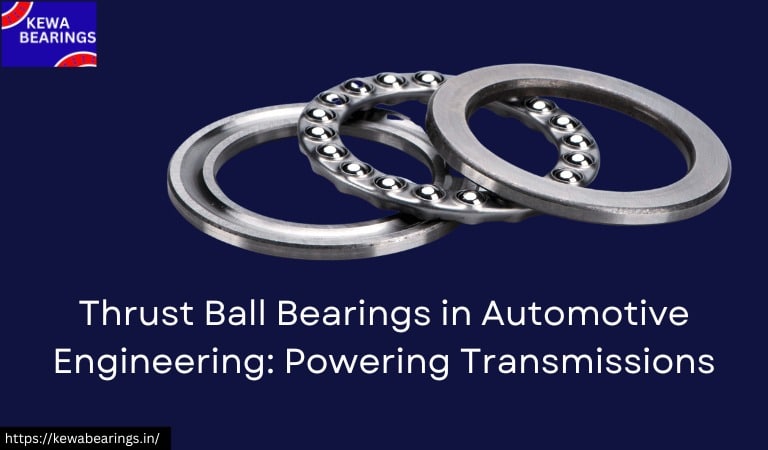For those in the bearing industry, thrust ball bearings are one of the most crucial bearings. These bearings come under the type of rotary bearing, rotate between parts reducing friction, and are designed to support an axial load (mostly in low-speed applications). It is the axial bearing that permits rotation between parts. Today, Kewa Bearings will talk about the role of these very bearings in automotive engineering especially for powering transmissions.
Kewa Bearings – Pioneer of Thrust Ball Bearings
As a global leader in the bearing industry, Kewa Bearings provides custom solutions to lead your industry. We find solutions to get the bearing you need and reduce your long lead times. Whether that is a bearing that is modified, manufactured, or repaired to your specifications, we can help you. In this article, we discuss thrust bearings, from designs to applications and more.
Understanding the Thrust Bearings
Thrust bearings include a variety of bearings that assist axial loads or axial force. It is an axial bearing that permits rotation between parts. Thrust bearings support the axial thrust of both horizontal and vertical shafts. The functions are to prevent the shaft from drifting in the axial direction and to transfer thrust loads applied on the shaft. Thrust bearings are generally seated against a raised thrust collar around the shaft. Unlike the tapered needle bearings, the thrust collar allows the axial load to be transferred from the shaft to the bearing. Thrust bearings are typically used in pairs on each side of the thrust collar. Depending on the usage or application, there are many types to choose from. The general types include a flat land bearing which is made of a single flat disc with grooves and no moving parts. Another type is the tilting pad bearing which consists of moveable metal plates called thrust shoes. These bearings have an upper hand over tapered roller bearings.
Types of Thrust Bearings
Thrust bearings support a force applied in the same direction as the shaft. They can be categorized into two major types. The thrust ball bearings are used to deliver high performance, while the thrust roller bearings are typically used in applications where high load-carrying capacity is needed. The thrust ball bearing types are used in low-thrust applications where there is little axial load. They are available in two designs: single-direction and double-direction. On the other hand, cylindrical thrust roller bearings give good carrying capacity. The tapered thrust roller bearings are most commonly used in automotive applications. They can support greater thrust loads than the ball type due to the larger contact area. They are designed to accommodate combined loads, i.e., simultaneously acting radial and axial loads. Tapered ball bearings offer the highest load rating density of all thrust bearings.
Why Choose Thrust Roller Bearings?
Thrust Ball Bearing Types come with tons of benefits. The major ones include:
- Oil-Embedded – Used for applications with frequent starts and stops, the oil lubricates the bearing during startup.
- Dry-Running – Operates with less friction and can work in high-temperature environments.
- Food-Grade – Made of FDA-listed materials for use in food applications.
- Corrosion-resistant – High strength makes them suitable for marine and mining applications.
Application of Thrust Bearings
Thrust bearings are the heartthrob of the automotive industry since they require high load capacity. They are used in cars because the forward gears in modern car gearboxes use helical gears, which, while aiding in smoothness and noise reduction, cause axial forces that need to be dealt with. Moreover, they offer high reliability. They provide high load capacity in harsh environments as well as simple mounting. In addition to that, they provide a wide assortment. To seek a quote, reach out to us at https://kewabearings.in/.

